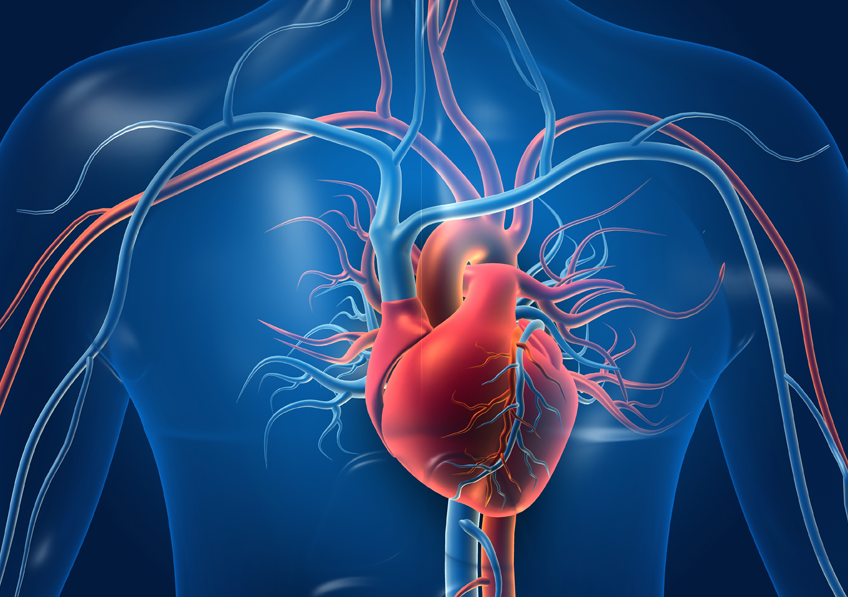Researcher Contact
Mathieu Pernot
Inserm researcher
Physics for medicine, unit 1273
Mickaël Tanter
Inserm researcher
Physics for medicine, unit 1273
 © Adobe stock
© Adobe stock
Currently, the treatment of heart valve diseases relies on the replacement of the dysfunctional valve with an artificial prosthesis. However, this procedure cannot be offered to all patients due to its invasive nature. In a new study, a group of researchers from laboratories shared by Inserm, ESPCI Paris, CNRS and Université Paris Cité, in close collaboration with the start-up Cardiawave[1] spin-off of the Georges Pompidou European Hospital and the Paris Medical Physics Laboratory (Inserm/CNRS/ESPCI/PSL), report for the first time the clinical efficacy of a “non-invasive” focused ultrasound therapy. The clinical trial, conducted on a sample of 40 patients, significantly improved their health. Their findings have been published in The Lancet.
Our heart beats about 70 times a minute at rest, or more than 100,000 times a day. It pumps blood into the body at a rate of 4 to 5 litres per minute. This is why with age the heart ages, arteries and valves can become damaged[1]. More than 10 million people have calcified aortic stenosis (CAR) in Europe and the United States, including 2 million severe cases, particularly in the elderly. In this disease, the aortic valve (positioned between the heart pump and the vascular system) calcifies, becomes rigid and can no longer open properly, leading to heart failure or sudden death. Today, the only existing treatment consists of the replacement of the defective valve with an artificial prosthesis, by open heart surgery via percutaneous arterial surgery. However, a significant number of patients are not eligible for these invasive procedures due to severe comorbidities and limited life expectancy.
Finding a therapeutic alternative for these patients is a major challenge for research. For example, a research team from Inserm’s French academic laboratories has developed and tested a new approach called “non-invasive ultrasound therapy” (or NIUT). After validating the concept, the technology was developed by Cardiawave, a spin-off start-up from a collaboration between the Georges-Pompidou European Hospital (AP-HP) and laboratories shared by Inserm, ESPCI and the CNRS (Paris Physical Institute for Medicine and Langevin Institute).
This approach is based on a technology that makes it possible to repair the aortic valve thanks to the precise and mechanical action of high-energy focused ultrasound delivered by a device applied to the patient’s chest, with the aim of softening the valve and thus improving its opening.
A clinical trial was conducted on a sample of 40 patients with severe forms of the disease at three clinical sites in France (Hôpital Européen Georges-Pompidou, AP-HP, Paris), the Netherlands (Hôpital Amphia, Breda) and Serbia (Centre clinique universitaire de Serbie, Belgrade). They were treated in a single session, with follow-ups scheduled at 1, 3, 6, 12 and 24 months.
At the end of the follow-up, the scientists observed:

The aortic valve consists of several leaflets (3 most often) which, when they become calcified, prevent it from opening properly. After ultrasound treatment, we see a significant improvement in the opening surface of the aortic valve shown here in the image on the right.
“These promising results represent a paradigm shift in the treatment of calcified aortic stenosis”, explains Emmanuel Messas, Principal Investigator of the clinical study.
“They show that this innovative approach is feasible and safe, and has significantly improved the hemodynamic and clinical parameters as well as the quality of life of the patients participating in the clinical trial,” adds Mickaël Tanter, Inserm Research Director at the Physics for Medicine laboratory in Paris.
“If its effectiveness is confirmed, this technology could represent immense hope for millions of patients suffering from severe forms of ORA who are currently at a therapeutic impasse,” explains Mathieu Pernot, Inserm Research Director at the Physics for Medicine laboratory.
The device called Valvosoft® is currently undergoing clinical safety and efficacy studies. It has not yet received marketing authorisation (CE marking, etc.) and is for the time being intended exclusively for clinical studies.
This project was supported by the Investments for the Future Program as part of the Global Innovation Competition. It also benefited from public aid managed by the French National Research Agency and the Horizon 2020 programme, the European Commission’s SME instruments.
[1]This study was led by Cardiawave, a spin-off start-up from Institut Langevin (Inserm/CNRS/ESPCI) and Physique for Medicine Paris (Inserm/CNRS/ESPCI/PSL)
[2]The New York Heart Association (NYHA) score for measuring the severity of heart failure improved or stabilized in 96% of patients (n=24); and the Kansas City Cardiomyopathy Questionnaire (KCCQ) mean score—another score for measuring the severity of heart failure—improved by 33%.
[3]The New York Heart Association (NYHA) score for measuring the severity of heart failure improved or stabilized in 96% of patients (n=24); and the Kansas City Cardiomyopathy Questionnaire (KCCQ) mean score—another score for measuring the severity of heart failure—improved by 33%.
Mathieu Pernot
Inserm researcher
Physics for medicine, unit 1273
Mickaël Tanter
Inserm researcher
Physics for medicine, unit 1273
Treatment of severe symptomatic aortic valve stenosis using non-invasive ultrasound therapy: a cohort study
The Lancet, 13 novembre 2023
DOI:https://doi.org/10.1016/S0140-6736(23)01518-0
Emmanuel Messas1,2,4, Alexander Ijsselmuiden5, Danijela Trifunović-Zamaklar6,7, Bernard Cholley3, Etienne Puymirat1,2, Jonathan Halim5, Radmila Karan6,7, Menno van Gameren5, Duško Terzić6, Vladimir Milićević7, Mickael Tanter8, Mathieu Pernot8, Guillaume Goudot1
1 Cardiovascular Department, Hôpital Européen Georges- Pompidou
2 Paris Cardiovascular Research Center, Inserm UMR_U970
3 Department of Anaesthesiology and Intensive Care Medicine, Hôpital Européen Georges-Pompidou, and Innovative Therapies in Haemostasis, Inserm UMR_S1140
4 Université Paris-Cité, Paris, France; STOP-AS Research Consortium, Recherche Hospitalo-Universitaire, Rouen, France
5 Cardiology Department, Amphia Hospital, Breda, Netherlands
6 Faculty of Medicine, University of Belgrade, Belgrade, Serbia
7 Clinic for Cardiology, Clinic for Cardiac Surgery (D Terzić, V Milićević MD), and Department of Anaesthesiology and Intensive Care at Clinic for Cardiac Surgery (R Karan), University Clinical Centre of Serbia, Belgrade, Serbia
8 Physics for Medicine Paris, Inserm/ESPCI Paris-PSL/CRNS, Paris, France